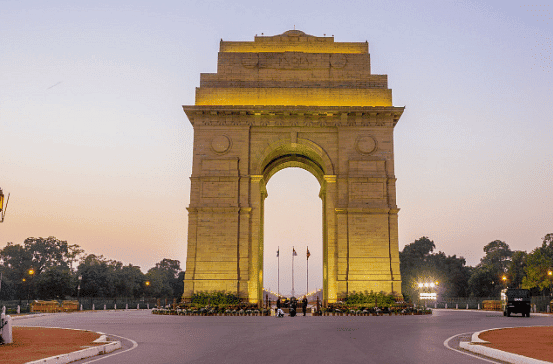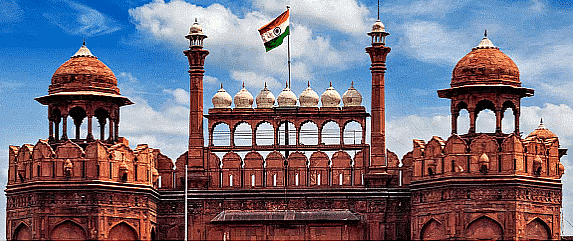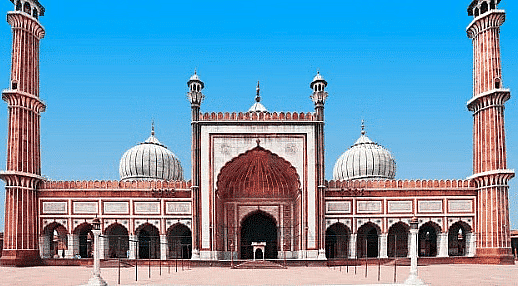Delhi - 2 Class 3 Worksheet SST
 Q1: Multiple-Choice Questions (MCQs):
Q1: Multiple-Choice Questions (MCQs):
(i) What is the capital city of India?
(a) Mumbai
(b) Delhi
(c) Kolkata
(d) Chennai
Ans: (b)
Delhi is the capital city of India, hosting various government institutions and historical landmarks.
(ii) Which historical fort in Delhi served as the main residence of the Mughal emperors for over 200 years?
(a) Red Fort
(b) Qutub Minar
(c) India Gate
(d) Humayun's Tomb
Ans: (a)
The Red Fort in Delhi was the main residence of the Mughal emperors during their rule.
(iii) Which landmark in Delhi was built as war memorial to honor soldiers who died in World War I?
(a) Red Fort
(b) Qutub Minar
(c) India Gate
(d) Lotus Temple
Ans: (c)
India Gate is a war memorial dedicated to soldiers who sacrificed their lives in World War I.
(iv) Which historical site in Delhi is known for its soaring tower and is the tallest brick minaret in the world?
(a) Red Fort
(b) Qutub Minar
(c) India Gate
(d) Lotus Temple
Ans: (b)
The Qutub Minar is a famous monument in Delhi and is the tallest brick minaret globally.
Q2: Fill in the Blanks:
(i) Humayun's Tomb is a magnificent Mughal structure in Delhi that is a UNESCO __________ Heritage Site.
Ans: World
Humayun's Tomb is recognized as a UNESCO World Heritage Site for its architectural significance.
(ii) The Lotus Temple in Delhi is a famous Bahá'í House of Worship, known for its distinctive __________ shape.
Ans: lotus
The Lotus Temple's design resembles a lotus flower, and it's a Bahá'í House of Worship.
(iii) The Red Fort in Delhi was built using red sandstone and is a symbol of __________ power and grandeur.
Ans: Mughal
The Red Fort is a Mughal-era monument and represents their architectural magnificence.

(iv) The Jama Masjid in Delhi is one of the largest mosques in India and was built by the Mughal emperor __________.
Ans: Shah Jahan
The Jama Masjid was constructed by Mughal Emperor Shah Jahan.
(v) The Rashtrapati Bhavan in Delhi is the official residence of the __________ of India.
Ans: President
The Rashtrapati Bhavan is the official residence of the President of India.
Q3: True/False Questions
(i) Delhi is the capital city of India.
Ans: True
Delhi serves as the capital city of India.
(ii) The Qutub Minar is a UNESCO World Heritage Site.
Ans: True
The Qutub Minar is a UNESCO-listed World Heritage Site.
(iii) The Red Fort was built to honor soldiers who died in World War I.
Ans: False
The India Gate was built for this purpose, not the Red Fort.
(iv) The Lotus Temple is an example of Mughal architecture.
Ans: False
The Lotus Temple's design is unique and does not belong to the Mughal architectural style.
(v) The Jama Masjid was built by Emperor Akbar.
Ans: False
The Jama Masjid was built by Emperor Shah Jahan, not Akbar.

Q4: Answer the following Questions
(i) What are some historical buildings mentioned in the passage that are located in Delhi?
Ans: Some historical buildings in Delhi include Qutub Minar, Red Fort, India Gate, Jama Masjid, and the Samadhi of Mahatma Gandhi and Indira Gandhi.
(ii) What languages are spoken in Delhi according to the passage?
Ans: The main languages spoken in Delhi are English, Hindi, Punjabi, and Urdu. Additionally, all languages of India are spoken in Delhi due to its diverse population.
(iii) Who built the present Delhi in the 17th Century, and what was it called at that time?
Ans: King Sahajahan built the present Delhi in the 17th Century, and it was known as Sahajahanabad.
(iv) What is the significance of Delhi's climate, and what are its characteristics in summer and winter?
Ans: Delhi's climate is described as hot in summer and cold in winter. The city receives about 650 mm of rainfall during the rainy season. Overcrowding and pollution are common due to the densely populated nature of the city.
FAQs on Delhi - 2 Class 3 Worksheet SST
| 1. What are the top tourist attractions in Delhi? |  |
| 2. How can I reach Delhi from other cities in India? |  |
| 3. What is the best time to visit Delhi? |  |
| 4. Are there any famous markets in Delhi for shopping? |  |
| 5. Is it safe for solo female travelers to visit Delhi? |  |
















